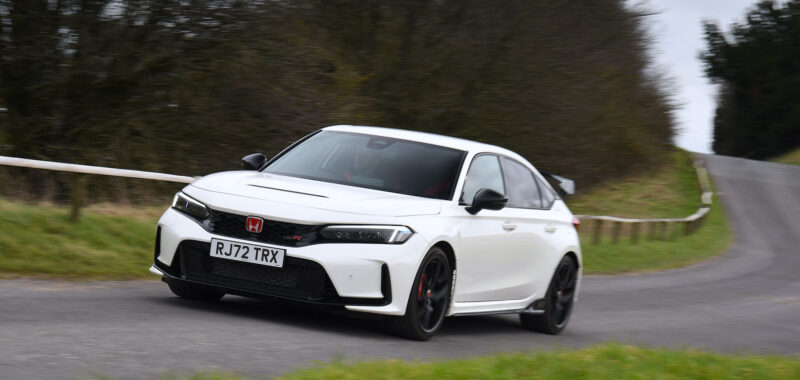For a front-wheel-drive hatchback, the new Type R has quite the swanky set of mechanicals.
The engine is a 2.0-litre turbocharged unit based mostly on the previous car’s, although with a lighter flywheel, increased air intake capacity and a freer-flowing exhaust, among other things.
It now makes 325bhp at 6500rpm and 310lb ft at just 2200rpm (previously 316bhp and 295lb ft).
Power drives through a six-speed manual gearbox, as before but with a redesigned gate to reduce the lever’s lateral flex when in gear and, in particular, to ease the second-to-first downshift; to make what was already very good more precise. There’s a mechanical limited-slip differential, too.
Putting 325bhp through the front wheels alone is asking a lot, so the suspension retains its dual-axis strut to reduce the gap between the wheel centre and kingpin so there’s less propensity to torque steer. At the rear is a multi-link set-up and there are adaptive dampers. From those points of view this remains an analogue old-school hot hatch, but it’s a school whose last day of term is looming. Time to bring games.
Elsewhere, the increase in body rigidity, it feels, means the suspension is in the right place to do its job more often, in turn allowing Honda to offer a car with more compliance. The previous car needed to be stiff to return the precision Honda wanted; here the inherent rigidity should provide most of that, which should allow for a softer set-up.
Other significant mechanical changes involve the steering, an electrically assisted system that had, Honda thought, reached the limit of how stiff its torsion bar could be. But increasing the resolution of a sensor has allowed the bar to be stiffened by 60%, said to increase steering immediacty and precision.
But overall it makes for a more stable platform from which to hang the mechanicals.

